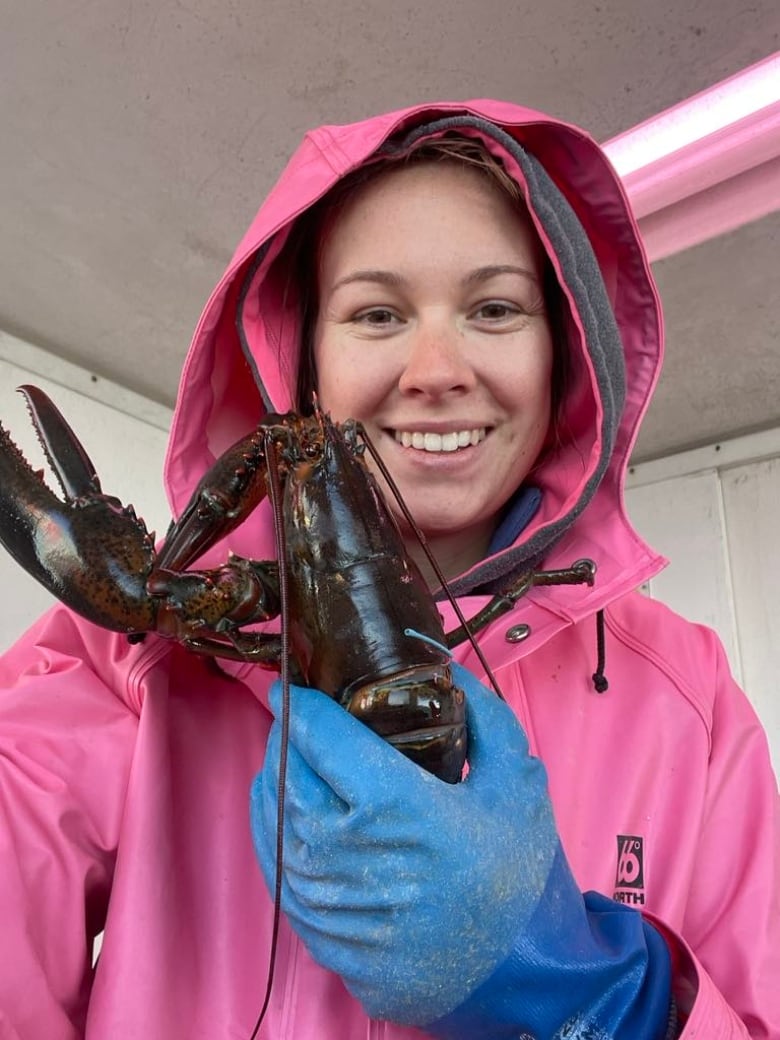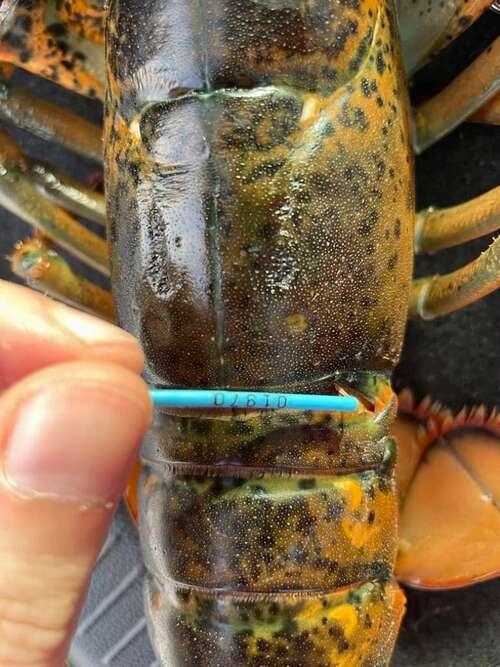Emily Blacklock was scrolling through social media when she spotted a video of a Maine fisherman hauling in an unexpected catch — a lobster with a tag from her research team found hundreds of kilometres away from where it was attached in New Brunswick.
“All of a sudden I saw one of our blue tags, so I ended up messaging him,” she said.
“We all know it’s possible that lobsters go from the Bay of Fundy to the Gulf of Maine, but the chance of him being the one to catch that lobster and make a video was fantastic.”
Blacklock, a PhD candidate at the University of New Brunswick, is part of a team of researchers trying to find a way to identify the age of lobsters.
There is currently no way to tell exactly how old the crustaceans are, as their shells molt and are regrown. They don’t show typical signs of aging like other species, so age estimates are normally based on size.
The study, led by UNB professor Rémy Rochette, has been taking tissue samples from small tagged lobsters since it started tagging them in spring 2022.
Blacklock and another PhD student in the lab have tagged about 2,250 from lobster fishing area 36 on the New Brunswick side of the Bay of Fundy. The zone spans from St. Martins to Deer Island.

The tags attached to the lobsters are tiny pieces of plastic with a unique identification number and a phone number.
As fishermen call them in, Blacklock said her team takes additional samples so they can compare the tissue changes.
“The lobster is actually able to age with the tag, so if they molt the tag stays with the lobster. So it can be there as long as it takes until that lobster is caught again,” she said.
All of the 82 lobsters called in so far have been in the Bay of Fundy, until the discovery in Maine.
Jacob Knowles, a fifth-generation lobster fisherman and a social media influencer, posted the footage of the catch in early January. He shared it with his audience of more than three million followers on TikTok, initially thinking it might be a “lottery lobster” tracked by the state of Maine.
In the video, he tosses it back in the ocean after writing down the phone number. It got more than two million views.
Blacklock saw it the next day and messaged Knowles to explain it was likely part of her study.
They eventually got in touch last week and she was able to explain how far the lobster had travelled – which Knowles shared with his audience in two update videos.
The lobster found in the Gulf of Maine, off the coast of Bar Harbor, had been tagged in Saint Martins, N.B. on Nov. 29, 2022, and had been in the water for 421 days.
“If we drew a straight line between those two locations, it would have been 256 kilometres,” Blacklock said.
“It’s probably much farther than that distance because we don’t know the exact path it took to get there.”
Blacklock said there are studies that have shown lobsters have the ability to travel long distances. But she said the chance of someone catching it and calling it in from that far away was “pretty fantastic.”
The lobsters have been called in across the entire Bay of Fundy, from Digby, N.S., to Campobello Island.

If someone catches a lobster with a tag, the researchers are asking them to call or text the phone number written on it. If it’s in area 36, they’ll buy it back.
For any lobsters outside of the zone, while the team can’t buy it, they’re asking for a picture of the crustacean with a gauge next to it for a measurement. The researchers would also like the co-ordinates to inform a separate study about how lobsters travel.
The lobster Knowles found was released, but he was able to share the exact co-ordinates, date and time where it was caught. Because of the tag in the picture, the researchers were able to estimate the size of the lobster.
The team is now making maps to see where the lobsters have gone, but the study is still in early stages. Once there are enough tissue samples, which could happen at the end of this spring fishing season, they’ll be sent off for lab testing.



